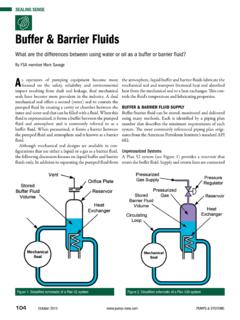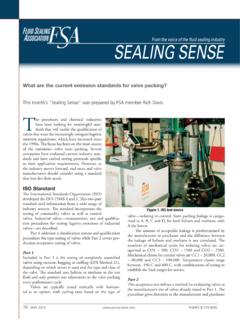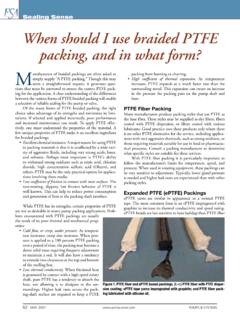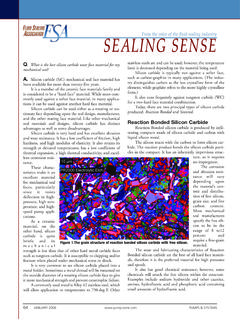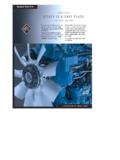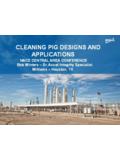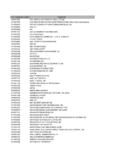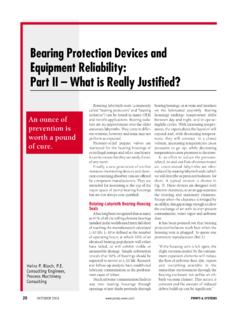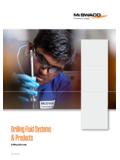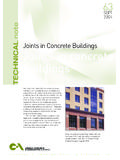Transcription of SEALING SENSE
1 112 AUGUST 2008 PUMPS & SYSTEMSA lmost all centrifugal and rotary pumps require a seal-ing system to provide SEALING integrity of the drive shafts carrying the impellers and protect against pumped fl uid leakage and the environment outside of the wetted areas. These SEALING systems range from traditional braided materials packed around the shaft to complex mechanical seal systems used in many modern pumps. Throat BushingsPump Standard API-610 requires that the pump casing contain a seal chamber in which mechanical seals compliant with API-682 can be mounted.
2 A common component in both of these specifi cations is the so-called throat bushing, which is defi ned as: A device that forms a restrictively close clearance around the sleeve (or shaft) between the (inner) seal and the impeller. The throat bushing can form a primary interface between the pump and the mechanical seal. According to the arrangement of the mechanical seal and the type of fl ush plan applied, such bushings are not always required. When they are used, the details of their design and use can be lost in the API-610 and API-682 standards.
3 Here is a look at throat bushings in more detail. FunctionAs its defi nition implies, the primary role of a throat bushing is to provide a restriction between the fl uid being pumped by the impeller and the mechanical seal area, so that fl ow is reduced or controlled. Such a fl ow restriction can be required in either direction; for instance, the restriction would stop the fl ow into the seal chamber to avoid particulate contami-nation of the chamber. When the mechanical seal fl ush plan uses processed fl uid either cooled, fi ltered or physically different from the pumped media the fl ow from the seal chamber into the pump may need to be controlled.
4 Throat bushings must be designed to provide the optimum envi-ronment for both the mechanical seal and pump since the fl uid fl ow amount through a concentric annular restriction is proportional to the cube of the clearance and their axial CriticalFor pumps working at high pressures, fl uid pressure control in the seal chamber, which provides loads on the mechani-cal seal faces, is important and often requires a very small throat bushing clearance. It is often debated how small the clearance should be.
5 All parties agree that controlling the clearance between the shaft and throat bushing leads to increases in effi ciency and performance of both the pump and mechanical seal since the isolation provided can allow optimum operation of both the clearances between the throat bushing and the rotating element can often lead to an increased risk of contact between the two components, especially during times of start-up and any upset situations within the pump or mechanical seal.
6 The interface materials should be able to tolerate such contact without problems, including: Galling or seizing of the two components, which can occur between metallic materialsParticulate generation, which could possibly upset the micron level gaps found in the mechanical seal interfacesHeat generation, which can increase the temperature of the seal chamberIn essence, the throat bushing must behave as a wear part, so its material selection must be considered in the same way as it s considered for a wear component within the pump.
7 In addition to the bearing requirement for a throat bushing, effects like fl uid erosion and thermal expansion differences between the pump, shaft and throttle bushing must also be CompositesWith micron levels of clearance between mechanical seal Where mechanical seals meet pumps: What is the next generation? From the voice of the fl uid SEALING industry SEALING SENSEPUMPS & SYSTEMS AUGUST 2008 113faces, high levels of vibra-tion in the pump system can often be problematic.
8 The use of composite wear rings to reduce these vibrations and assist with Lomakin Effect support of the rotating compo-nents has proven an asset to mechanical seals when used with composite wear ring equipped pumps. Extending the use of com-posites into the mechani-cal seal area can also pro-vide similar benefi ts to those found in pumps. In Fluid SEALING AssociationSealing SENSE is produced by the Fluid SEALING Association as part of our commitment to industry consensus technical education for pump users, contractors, distributors, OEMs and reps.
9 This month s SEALING SENSE was prepared by FSA Member Craig Watkinson. As a source of technical information on SEALING systems and devices, and in cooperation with the European SEALING Association, the FSA also supports devel-opment of harmonized standards in all areas of fl uid SEALING technology. The education is provided in the public interest to enable a balanced assessment of the most effective solutions to pump technology issues on rational total Life Cycle Cost (LCC) Mechanical Seal Division of the FSA is one of fi ve with a specifi c product technology focus.
10 As part of their educational mission, they develop publications such as the Mechanical Seal Handbook, a primer intended to complement the more detailed manufacturer s documents produced by the member companies. This handbook served as the basis for joint development of the more comprehensive Hydraulic Institute publication: Mechanical Seals for Pumps: Application Guidelines. Joint FSA/ESA publications such as the Seal Forum, a series of case studies in pump performance, are another example as is the Life Cycle Cost Estimator, a web-based software tool for determination of pump seal total Life Cycle Costs.

